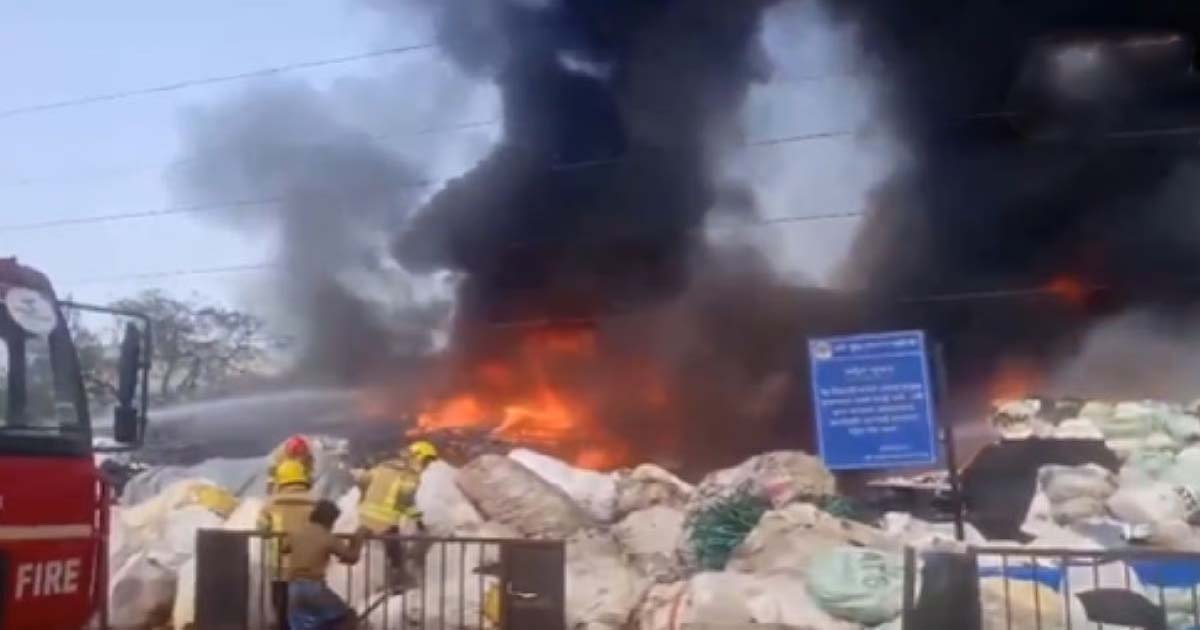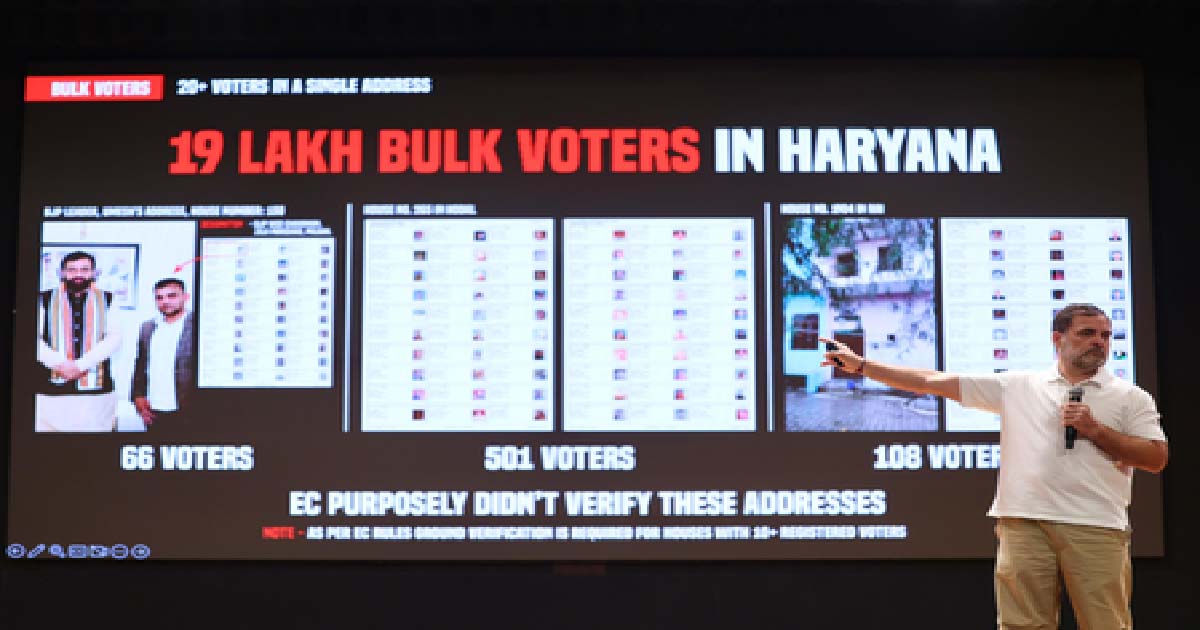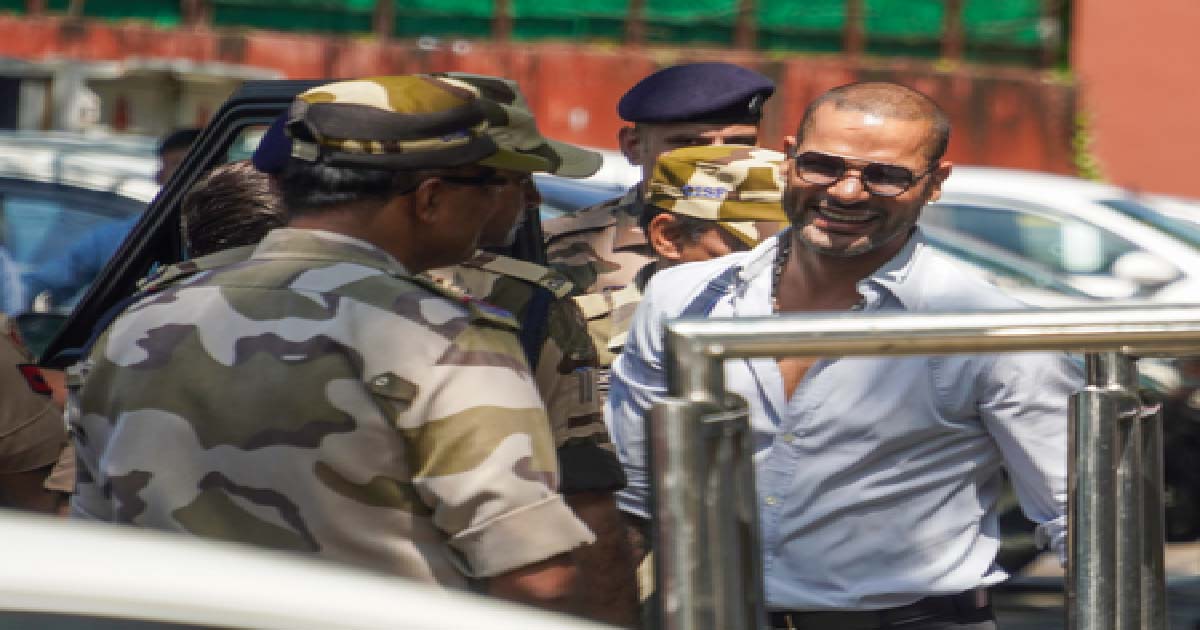National News
Heavy rainfall forecast for east and central India, isolated downpours in northeast

There will be an increase in rainfall activity over east India including Bihar, Jharkhand, Gangetic West Bengal, and Odisha from Friday and northeastern states with isolated heavy to very heavy rainfall during next five days, the IMD said.
The India Meteorological Department (IMD) also said that enhanced rainfall activity will continue over west and parts of central India with very heavy rainfall over Konkan, Goa, ghat areas of Madhya Maharashtra, Vidarbha, Chhattisgarh, and Gujarat on Friday and significant reduction thereafter.
In northwest India, the weather forecast predicts light to moderate fairly widespread to widespread rainfall, with isolated heavy rainfall expected in various states.
“On Friday and Saturday, Uttarakhand, Himachal Pradesh, Haryana, Chandigarh, Delhi, and east Rajasthan are likely to experience these weather conditions. Jammu and Kashmir, Punjab, west Uttar Pradesh, and west Rajasthan are also expected to see similar conditions on Friday. Moreover, from Saturday to August 1, east Uttar Pradesh is likely to witness this pattern of rainfall,” said the IMD.
Central India can expect light to moderate fairly widespread to widespread rainfall on Friday and Saturday. However, there may be a reduction in rainfall activity after this period.
On Friday, Chhattisgarh and Vidarbha should be cautious as isolated very heavy rainfall is anticipated in these areas. West India’s weather forecast indicates light to moderate fairly widespread to widespread rainfall for the next five days over Konkan and Goa and the ghat areas of central Maharashtra.
“On Friday, Gujarat and Marathwada are also likely to experience this rainfall pattern. Furthermore, on the same day, isolated very heavy rainfall is predicted over Konkan and Goa, ghat areas of Madhya Maharashtra, and Gujarat. Mumbai city and adjoining areas should be prepared for isolated heavy rainfall on Friday,” it said.
The weather forecast agency futher said that in south India, there will be light to moderate fairly widespread to widespread rainfall on the current day over Telangana and coastal Karnataka. However, a significant reduction in rainfall activity is expected thereafter.
East India forecast indicates light to moderate fairly widespread to widespread rainfall over Odisha from Friday to July 31. “West Bengal & Sikkim are likely to experience this rainfall till Saturday, while Jharkhand will witness it from July 30 to August 1. Bihar should also expect this rainfall pattern on July 30 and 31,” it said.
In Northeast India, light to moderate fairly widespread to widespread rainfall is predicted for the next five days. “On Friday, Arunachal Pradesh, Assam, and Meghalaya may encounter isolated very heavy rainfall,” it added.
National News
Navi Mumbai Fire: Massive Blaze Breaks Out In Scrap Warehouse In Airoli; No Casualties Reported

Navi Mumbai: A massive fire broke out in a scrap warehouse located at Airoli’s Digha on November 6, an envelope of black smoke could be seen engulfing the area. According to Fire officer Santosh Patil, the fire was brought under control by 3.30 PM. He also informed that no casualties were reported in the incident.
While speaking to nerws agency Media, Fire officer Patil said, “…I received information on mobile from local workers about the fire… The fire was brought under control at 3.30, and now cooling operations are being carried out… There are no casualties in this incident…”
National News
Congress to submit over 5 crore signatures against ‘Vote Chori’ to President on Nov 8

New Delhi, Nov 6: The Congress on Thursday renewed its allegation of electoral manipulation and “Vote Chori”, outlining its plan to submit a memorandum with over 5 crore signatures to President Droupadi Murmu on November 8 for seeking urgent corrective action.
K. C. Venugopal, General Secretary, AICC, (Organisation), in a statement, said that so far over 5 crore signatures have been collected nationwide – a powerful testimony to the anger, apprehension, and deep concern among citizens about the “naked murder of democracy through manipulative practices such as duplicate voting, fake voter entries, and fraudulent addresses in the electoral rolls”.
Highlighting the party’s “Vote Chor Gaddi Chod” campaign, Venugopal said through the signature campaign the public has made five clear and democratic demands from the Election Commission of India: Prosecute officials and agents involved in systematic voter suppression; publish a machine-readable voter list with photographs for public scrutiny; release all deletion and addition lists with photographs before every election; establish a grievance redressal mechanism for wrongful deletions and announce a clear cut-off date for voter list changes, avoiding last-minute manipulations.
The Congress General Secretary said the party has been consistently raising concerns about electoral roll manipulation and large-scale electoral fraud undermining the sanctity of the democratic process.
Leader of Opposition in Lok Sabha Rahul Gandhi has repeatedly exposed the dangerous “vote chori” orchestrated by the BJP in collusion with the Election Commission of India, a direct assault on the people’s mandate, he said.
As part of the Congress party’s nationwide movement to defend democracy, the party launched the “Vote Chor Gaddi Chod” Signature Campaign, a mass public outreach and door-to-door initiative to mobilise citizens against electoral fraud, he said.
Beginning on September 15, 2025, following the successful culmination of the “Vote Chor Gaddi Chod” state-level rallies (August 22 – September 7), the campaign has seen participation from lakhs of citizens across districts, blocks, and mandals, said Venugopal.
Party functionaries, community leaders, professionals, and a large number of the public have joined hands to register their protest against the ongoing subversion of democratic norms, he said.
In the meeting of General Secretaries, In-Charges, and PCC Presidents held on Wednesday, it was unanimously decided that the first phase of the campaign will culminate with flag-off events at all State Headquarters on November 8, he said.
These programmes will be attended by senior leaders and party functionaries, symbolising the collective unity and determination of the Congress Party in this national struggle to safeguard democracy, said the Congress General Secretary.
After the culmination of events, all collected signatures will be dispatched to the AICC Headquarters, and in the next phase, the Congress Party will continue gathering more signatures from citizens across India, he said..
“Ultimately, these signatures – representing millions of voices – will be submitted to the President of India, demanding urgent corrective action,” he said.
Venugopal said that the “Vote Chor Gaddi Chod” campaign is not just a political movement – it is a citizens’ movement demanding accountability, transparency, and restoration of faith in the electoral process.
“The Congress Party stands shoulder to shoulder with the people of India in this collective call to protect the soul of our democracy,” he said.
Crime
ED attaches Rs 11.14 crore assets of Suresh Raina and Shikhar Dhawan in 1xBet case

New Delhi, Nov 6: The Enforcement Directorate (ED) has provisionally attached movable and immovable assets worth Rs 11.14 crore belonging to former Indian cricketers Suresh Raina and Shikhar Dhawan under the Prevention of Money Laundering Act (PMLA), 2002, in connection with its ongoing probe into the illegal offshore betting platform 1xBet, the agency said on Thursday.
According to the ED, the attachment includes mutual fund investments worth Rs 6.64 crore held in Raina’s name and an immovable property valued at Rs 4.5 crore belonging to Dhawan.
The action stems from multiple FIRs registered by various state police agencies against the operators of 1xBet and its surrogate brands – 1xBat and 1xBat Sporting Lines – accused of promoting and facilitating unlawful online betting and gambling operations across India.
“Investigation revealed that both Suresh Raina and Shikhar Dhawan knowingly entered into endorsement agreements with foreign entities for the promotion of 1xBet through its surrogates,” the ED said in its press note.
“These endorsements were made in return for payments routed through foreign entities to conceal the illicit origin of the funds, which are linked to proceeds of crime generated from illegal betting activities,” it added.
ED officials further found that 1xBet operated without authorisation in India, targeting users through social media, online videos, and print advertisements. To disguise the source of funds, payments were layered through multiple entities and foreign accounts.
During the investigation, the agency uncovered a laundering trail exceeding Rs1,000 crore. It was found that over 6,000 “mule” bank accounts were used to collect money from Indian bettors, routed through several payment gateways.
Many merchants on these platforms were onboarded without proper KYC verification, and their declared business activities did not match transaction patterns.
Searches were conducted at four payment gateways, leading to the seizure of incriminating evidence. Over 60 bank accounts linked to the operation have been frozen, with funds exceeding Rs 4 crore blocked so far.
Issuing a public advisory, the ED urged citizens to refrain from engaging in or promoting online betting and gambling platforms, warning that aiding such activities may lead to prosecution under PMLA, which carries imprisonment of up to seven years and attachment of assets derived from illegal proceeds.
Further investigation into the case is underway.
-

 Crime3 years ago
Crime3 years agoClass 10 student jumps to death in Jaipur
-

 Maharashtra1 year ago
Maharashtra1 year agoMumbai Local Train Update: Central Railway’s New Timetable Comes Into Effect; Check Full List Of Revised Timings & Stations
-

 Maharashtra1 year ago
Maharashtra1 year agoMumbai To Go Toll-Free Tonight! Maharashtra Govt Announces Complete Toll Waiver For Light Motor Vehicles At All 5 Entry Points Of City
-

 Maharashtra1 year ago
Maharashtra1 year agoFalse photo of Imtiaz Jaleel’s rally, exposing the fooling conspiracy
-

 National News1 year ago
National News1 year agoMinistry of Railways rolls out Special Drive 4.0 with focus on digitisation, cleanliness, inclusiveness and grievance redressal
-

 Maharashtra12 months ago
Maharashtra12 months agoMaharashtra Elections 2024: Mumbai Metro & BEST Services Extended Till Midnight On Voting Day
-

 National News1 year ago
National News1 year agoJ&K: 4 Jawans Killed, 28 Injured After Bus Carrying BSF Personnel For Poll Duty Falls Into Gorge In Budgam; Terrifying Visuals Surface
-

 Crime1 year ago
Crime1 year agoBaba Siddique Murder: Mumbai Police Unable To Get Lawrence Bishnoi Custody Due To Home Ministry Order, Says Report












